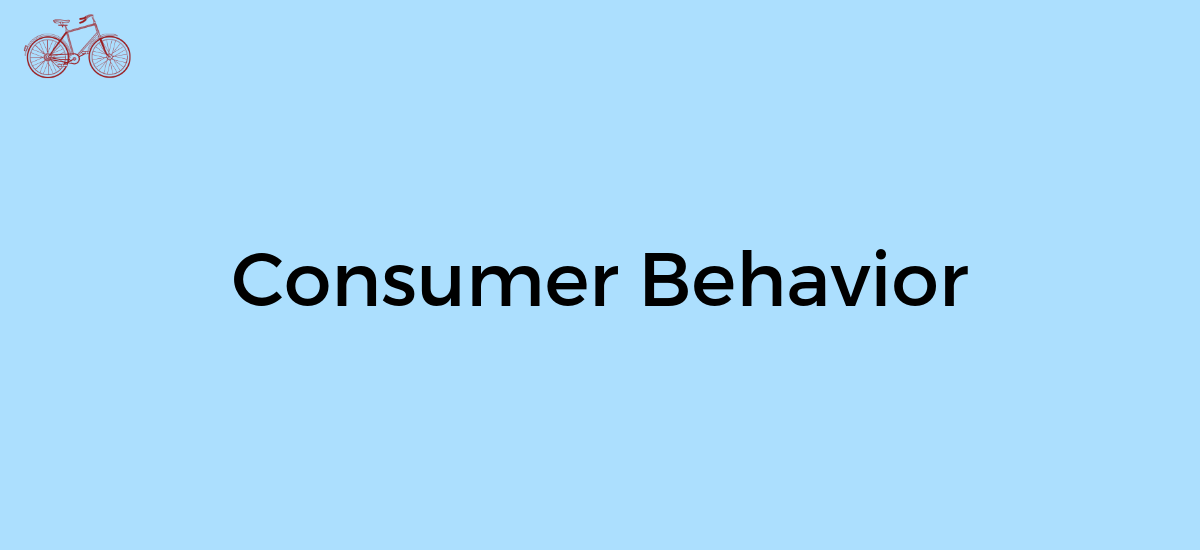Science backed marketing. That provides us a data-based approach to marketing strategy and decisions.
In order to work this way, we need to look at consumer behavior. An area in marketing, which uses quite a few areas of science to improve marketing strategy. It forces us to look, quantitatively, at our consumers. How they interact, purchase, and consume our products.
Here, we are going to discuss an overview of the concept of consumer behavior.
What is Consumer Behavior?
Consumer behavior is how consumers interact and behave when purchasing goods and services. The concept refers to all the activities, decisions, and factors that a consumer makes during the buying process.
Consumer behavior is typically referred to as an area of study, which studies all the buying behaviors that effect a consumer. It is a field of study that is rooted in psychology, as it often deals heavily with the psychological factors of consumers.
It’s an important area of marketing as it helps us determine why consumers purchase our products and services. Understanding consumer behavior also provides us a roadmap for how we execute our marketing. It allows us to understand the factors that influence purchase decisions. Allowing us to focus our marketing on the correct factors and marketing activities.
We will continue to look at many of the additional areas of consumer behavior to better understand the concept.
History of Consumer Behavior
In the post war years, marketing underwent a lot of changes. For the first time, marketing was not just about supply and demand. Supply was beginning to greatly outpace demand in more and more areas. This is where the concepts behind consumer behavior began to originate.
Marketing was being criticized for its lack of methodical implementation. So, in the 1940’s and 1950’s, marketing began to take more from scientific research. This helped it become more effective. Consumer behavior is one of those areas. The goal was to use scientifically based principles to make better marketing decisions.
Consumer behavior was ultimately born from Psychology, behavior-based sciences, and sociology. Taking from all the applicable sciences, marketers were able to begin creating better marketing campaigns. By understanding consumers better, marketers now segmented consumers, created profiles of target consumers, and created market segments. It was narrowing markets, and it began the niching of the previous heavy mass marketing.
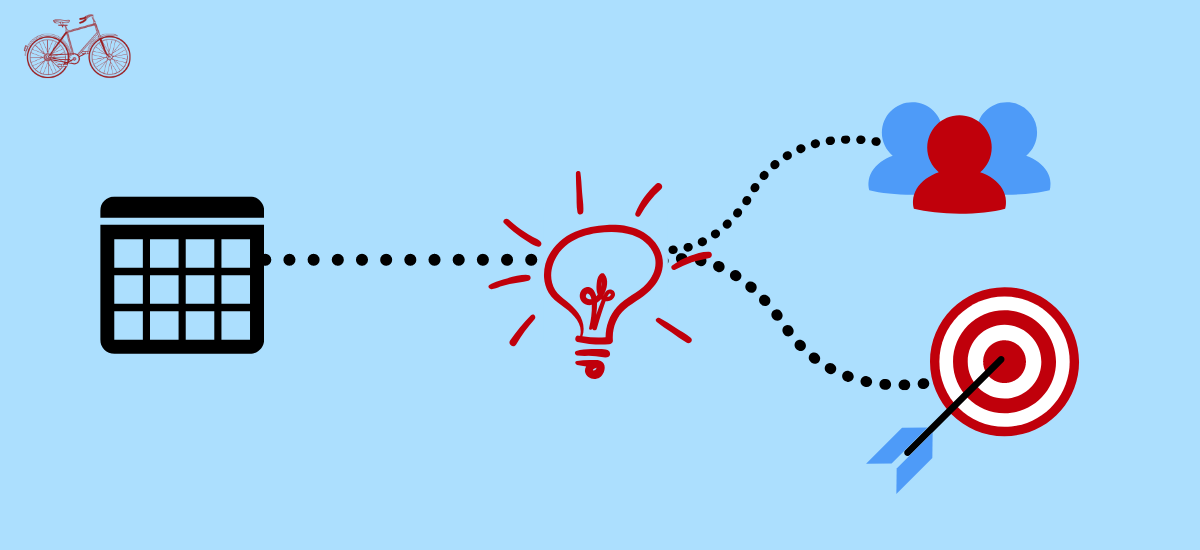
From the 1950s on, marketing has relied more and more on science and fact-based decision making. All in an effort to prove a better marketing ROI. This same process continues today. With more ways to collect marketing data, and as behavior-based sciences progress, consumer behavior is able to better evolve.
The Factors of Consumer Behavior
Consumers are affected by many factors. These factors influence their behavior and it is important to be conscious of these factors. The more complex the purchase, the more factors that need to be considered.
How you classify different consumer behavior factors will determine how many factors you look at. Here, we classify into four main categories. From those four categories, we look at many of the different factors within each category. Below are the factors we suggest thinking about with regards to consumer behavior.
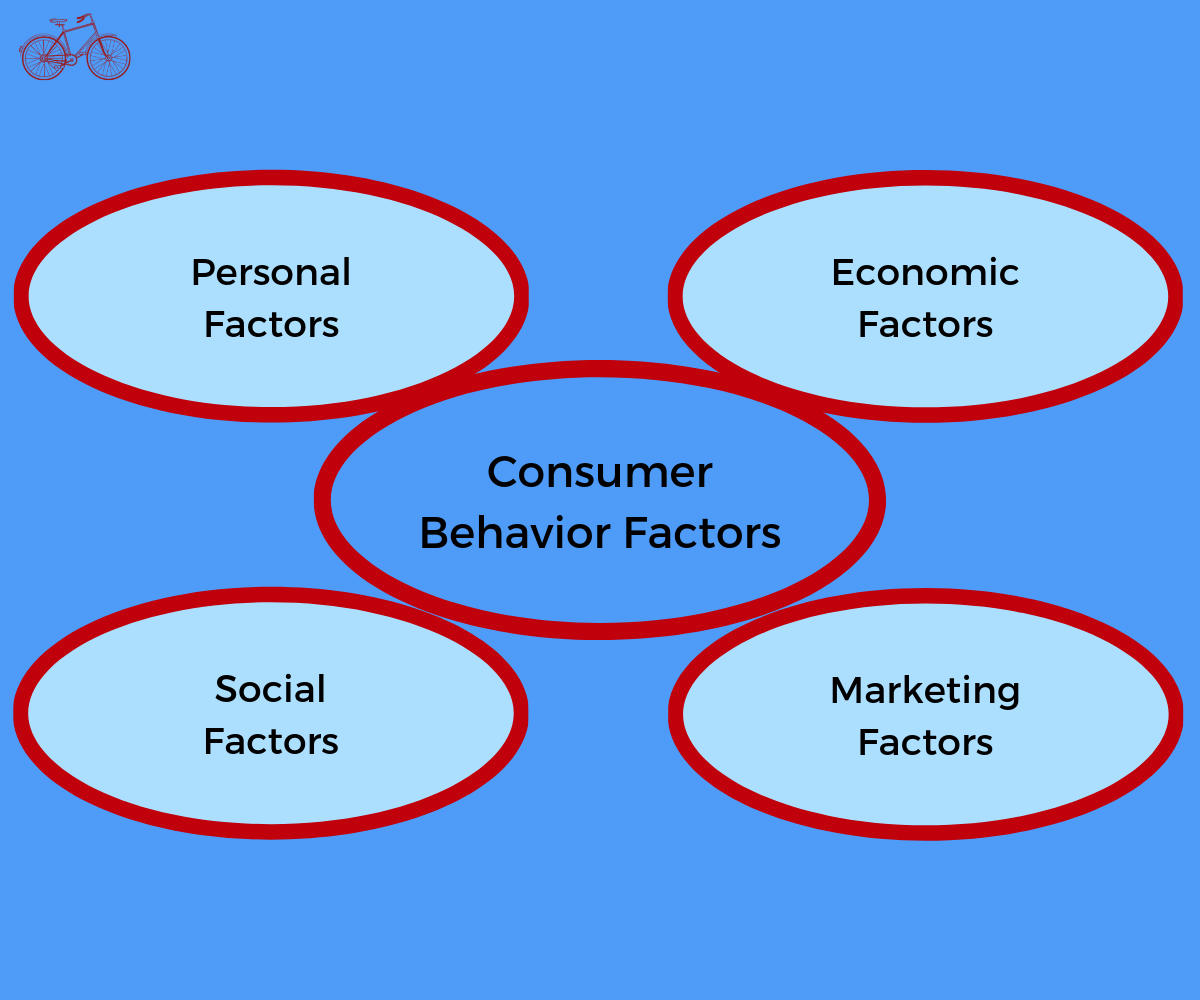
Personal Factors
The first category of consumer behavior factors to consider are personal factors. These are all the factors that make up an individual. These will typically include demographic information, employment information, and other simple factors that help to define an individual.
Personal factors include a person’s age, gender, culture, their perceptions, life and career experiences, race, and interests. These can all shape the behavior of a particular consumer or a group of consumers.
Economic Factors
The next set of factors that influence consumer behavior are economic factors. Economic factors will determine whether consumers have the ability to purchase the products you are trying to market to them. It also determines the likeliness of purchasing, from a financial perspective.
Economic factors that affect consumer behavior are factors like economic status, the overall health of the economy your target consumer is located in, purchasing power, disposable income, and the consumers income. These are all critical factors to understand the financial ability of your target consumers. This will heavily dictate their buying behavior.
Social Factors
Social factors play a key role in consumer behavior. These are all the factors surrounding a consumer that can influence them. They are the factors a consumer is surrounded with, typically based on where they live, which influence their behavior.
Social factors that influence consumer behavior can include people like friends, family, or their reference group. It can also include individuals like influencers they are following. Then, there are the social trends which will influence a consumer. All of these are factors that play a social role in behavior.
Marketing Factors
The last group of factors that we should consider are marketing factors. These are the marketing activities we use, which then influence the behavior of our buyers. These can be long term messaging that shapes our target consumers perspective. These can also be the efforts that are directly working to cause our target consumers to act.
Marketing efforts, though, play a critical role in influencing our target consumers.
Based on these four categories of factors influencing consumer behavior, you can begin to segment target consumers. Taking these factors into account help us to understand the behavior of our target market. Then, we can build our marketing to reflect that.
Consumer Behavior Data
In order to use all the factors above, we need data. We need to collect data about our target audience in order to understand the factors that are affecting their behavior. But, in order to collect data, we need to know what data we need. Once we know what data we need, we can begin to set up processes to collect the correct data.
The types of data we should be collecting roughly fit into four categories. Here, we discuss the four categories of data we should consider collecting, which helps us understand our target consumers.
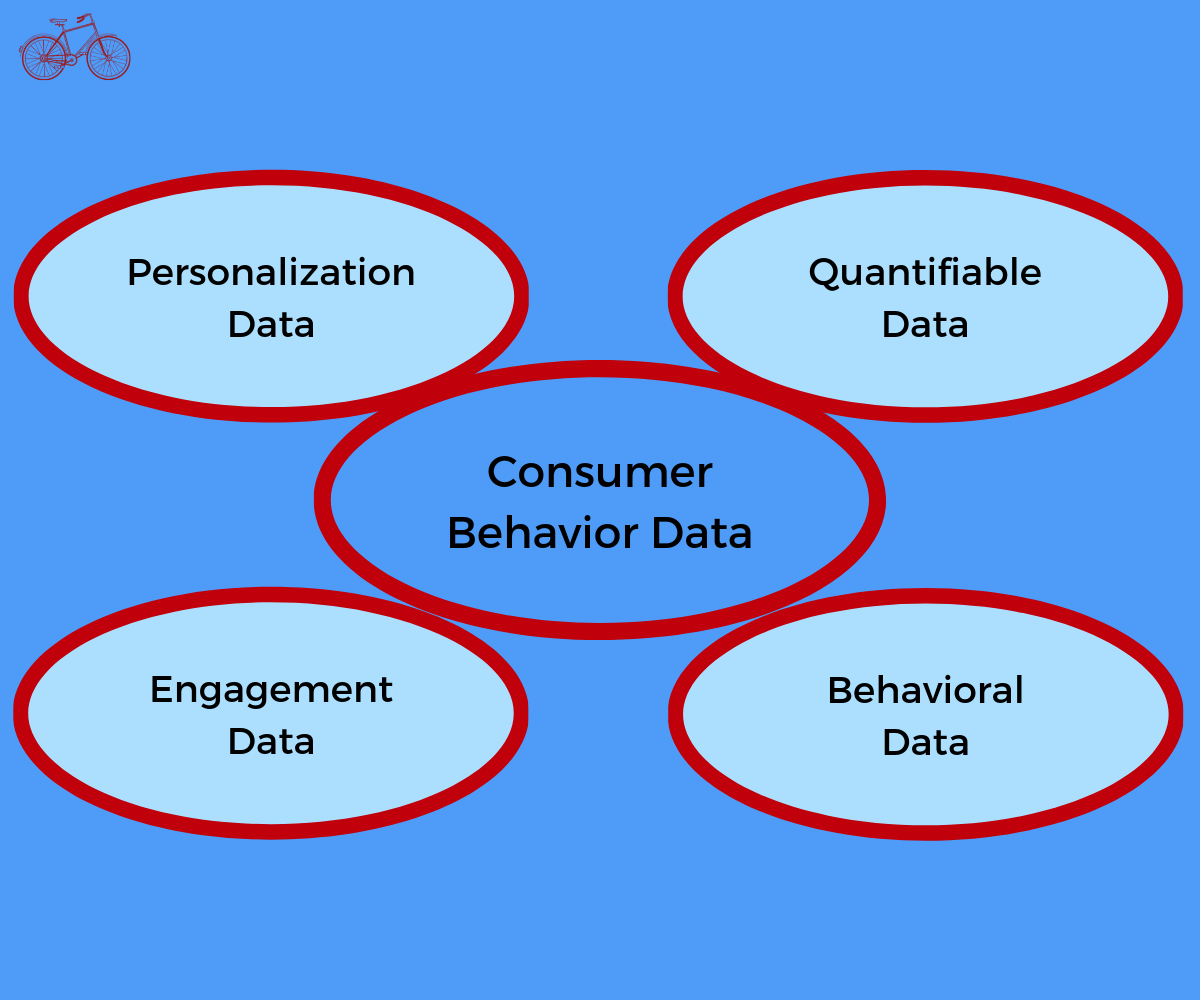
Personalization Data
The first type of data we should collect, whether from our prospects or customers, is personalization data. This is going to be the data bout the age of our target audience and any other demographic information.
This is the data that begins to create people out of our consumers. In order to collect this data, we need to establish a process. Things like lead forms through Facebook are great at collecting this data. Then, we can further use the data to precisely define our target audience.
Quantifiable Data
The next set of data we should look to collect is quantifiable data. This is all the data we can gather that can be used for statistical analysis. It’s hard data. This data can be things like website visits, website clicks, advertising clicks and engagement, or social media clicks and likes. It can even be things like consumer walking paths within a retail store.
These are all things we can place data points on. It creates behavioral data we can process. This can then be used to determine the best customer touch points.
Engagement Data
Another set of data that is useful to collect is engagement data. This can be how engaged consumers are when they are purchasing your product. It can also be engagement metrics which tell us how engaged consumers are when they are using our products.
Engagement data will help us determine how deliberate the behavior of our consumers is. As one example, how conscious our customers are when using our product will determine how much emphasis we place on the placement of our product. This is another category of data that can help us better understand the behavior of our target consumers.
Behavioral Data
The last category of critical data we should build processes to collect is behavioral data. This is how consumers actually behave as they purchase and use our products. It is the detailed data that can help us create behavioral maps of our target consumers. Then, we can improve the user experience and make our products more likely to be used.
These are four categories of data we should establish processes to collect and use. This data helps us better understand our target audience, who we should target, and how we should target them. It provides a methodical, data-backed approach to our marketing.
How to Use Consumer Behavior
Now that we understand consumer behavior, the factors of consumer behavior, and the data we should collect and use to understand our consumers, it is time to see how we apply the information. We can use consumer behavior to improve our marketing and shape our marketing strategy.
Here are ways we should use consumer behavior to provide a road map to our marketing.
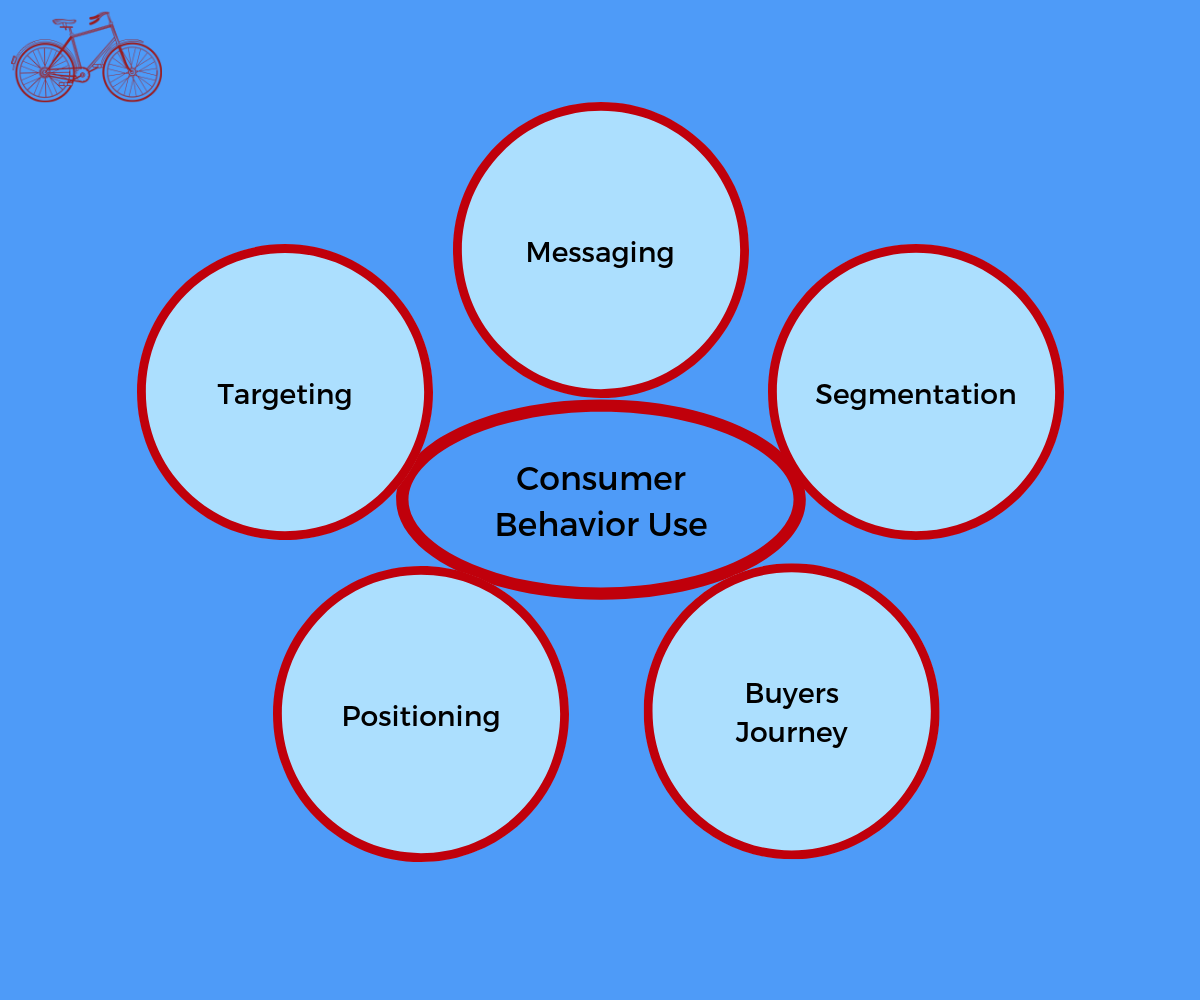
Targeting
Based on the consumer behavior information we gather, we can use it to improve our targeting. It can also help us create our targeting. So, to apply our consumer behavior knowledge, we can use it to create the targeting of our marketing message.
Messaging
Consumer behavior can dictate our messaging. When we understand our consumers better, we can create targeted messaging that resonates with their behavior.
Segmentation
Consumer behavior can allow us to segment our audiences. Whether this is segmenting our customers or our prospects. Once we understand their behavior during the buying process, we can segment consumers and tailor a buying process to them.
Positioning
The next way we can use consumer behavior is for positioning. Based on how consumers use our product, we can create positioning that reflects how it’s used. This positioning can help differentiate from competitors, as the position is based on how consumers use our products.
Shape the Buyers Journey
Another key way to use consumer behavior is to use it to shape the buyer’s journey. We can understand how our target consumer purchases our products. Then, we can create a purchase path and placement of our products to reflect how they are going to purchase our products.
These are a few of the ways we can use consumer behavior in our marketing. It can help shape our marketing strategy. Then, we can create massaging, positioning, and a buyer journey to reflect our consumers behavior.
Consumer behavior is a science-based understanding and approach to our marketing. It allows us to take research and shape our marketing efforts to how our target consumers actually behave with our products. These are some of the concepts to understand in order to use a behavior-based approach to marketing.
